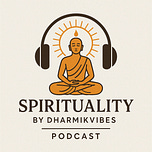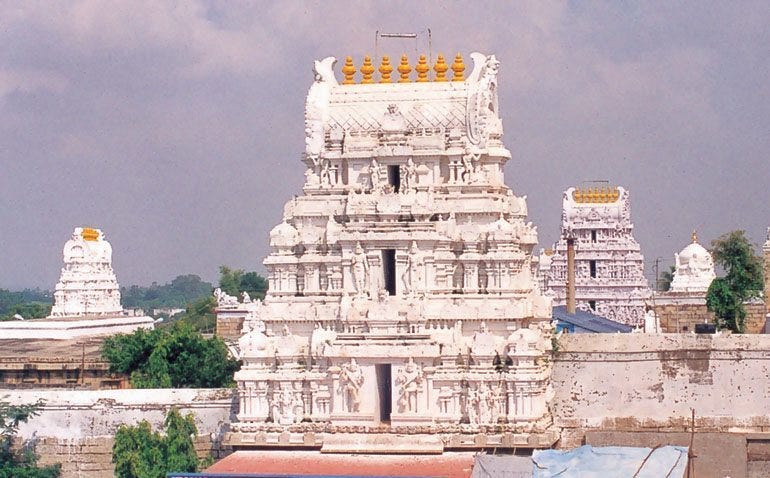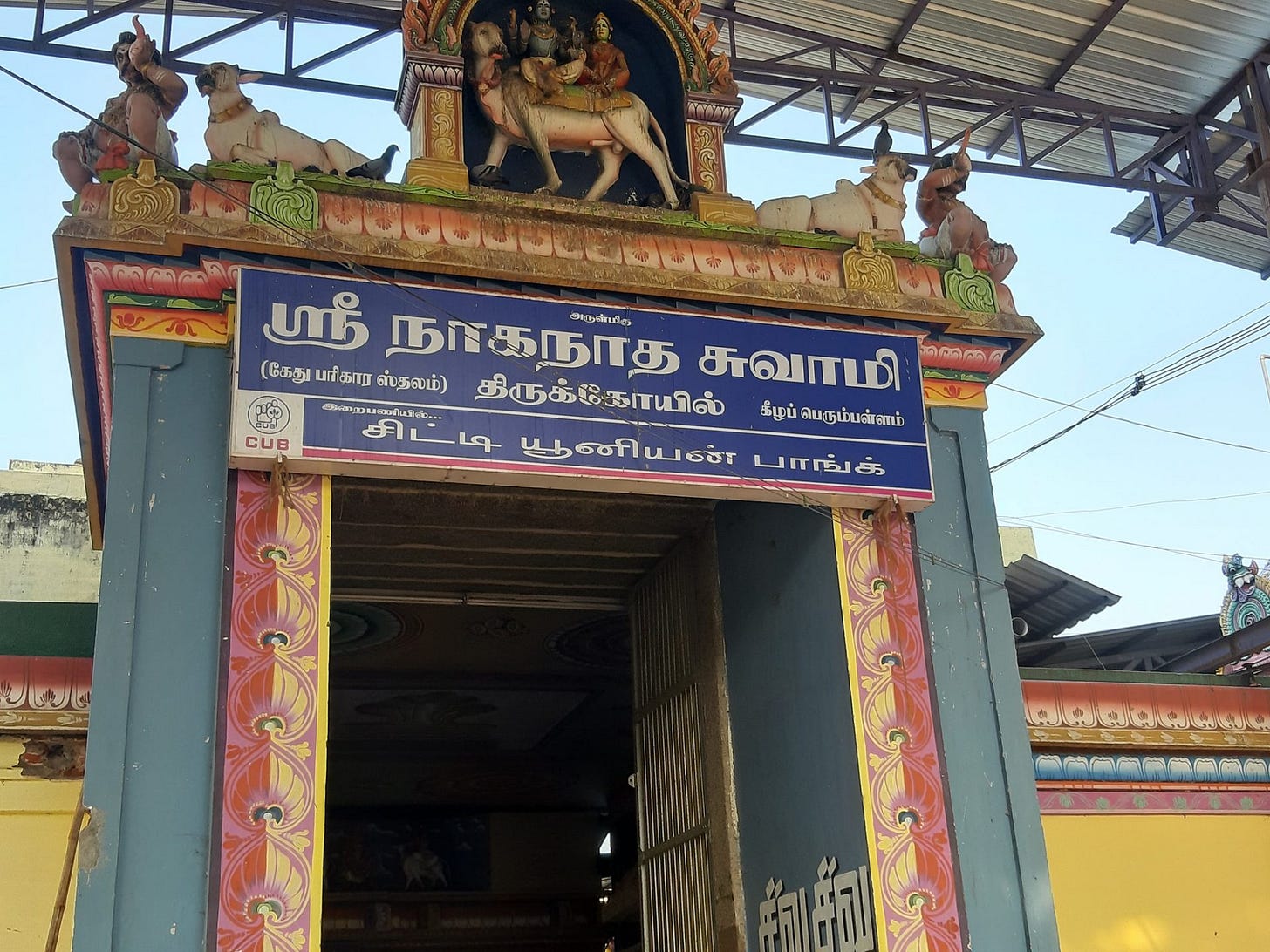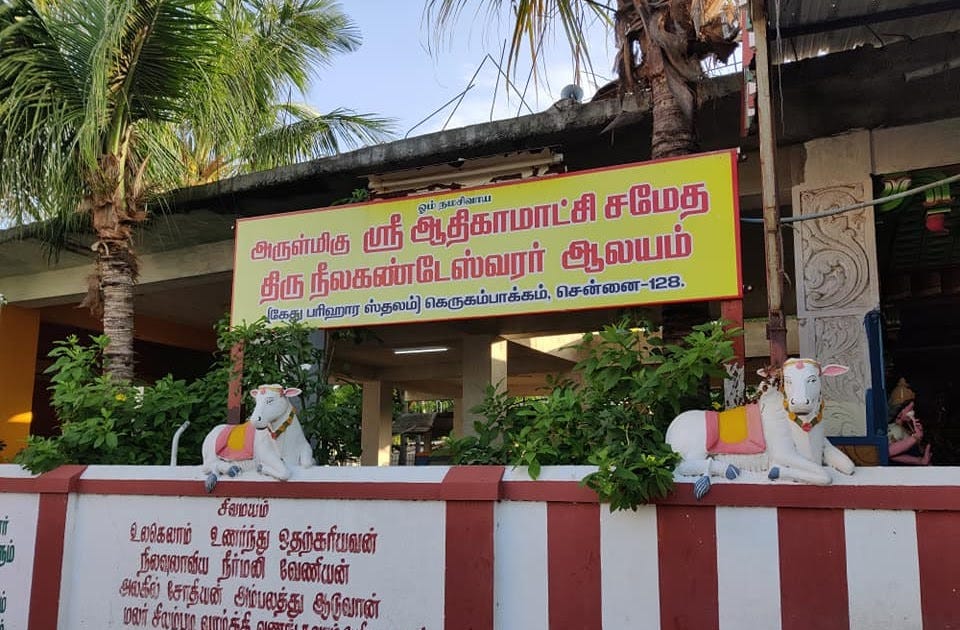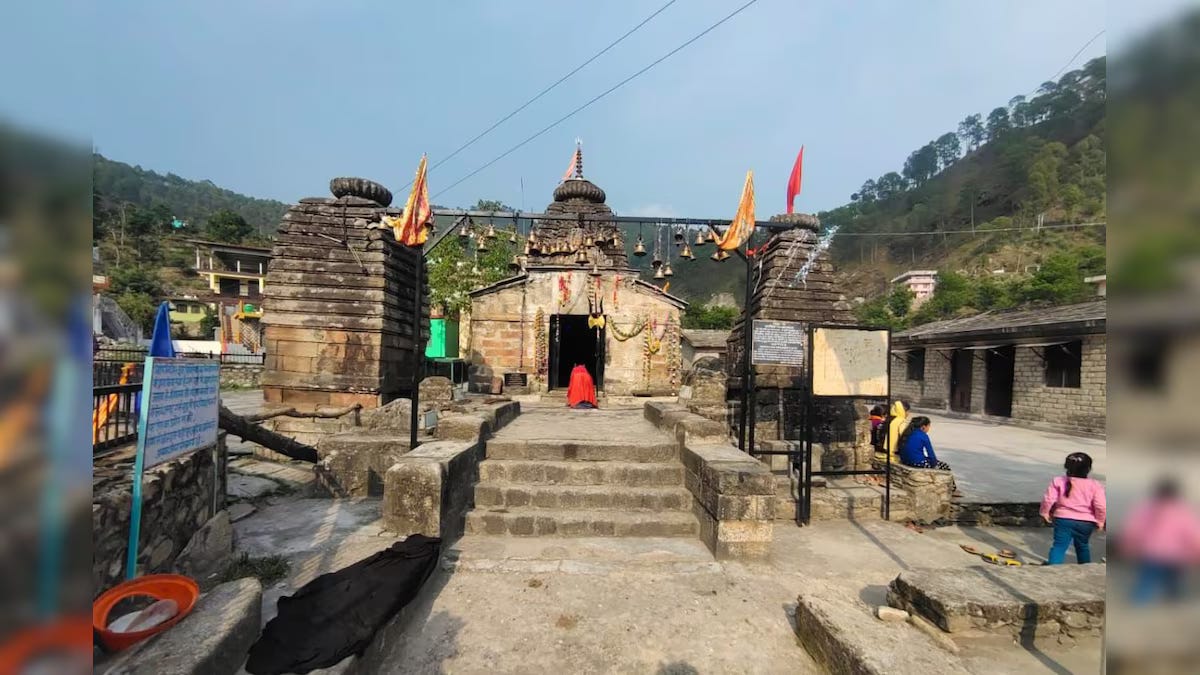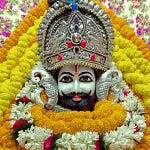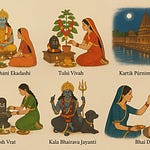Walking the cosmic path of karma, illusion, and liberation
In the sacred geometry of Hindu cosmology, Rahu and Ketu are the celestial shadows - invisible yet powerful, mysterious yet transformative. They are not physical planets but the lunar nodes that mark where the Moon’s path crosses the Sun’s path. In Vedic astrology, they symbolize the dualities that drive human life: material desires and spiritual liberation, attachment and detachment, illusion and awakening.
Rahu, the head of the serpent, represents worldly ambition, obsession, and the hunger for experience. Ketu, the tail, embodies spiritual insight, detachment, and transcendence. Together, they form the karmic axis that governs our destiny - teaching lessons that no other planets can.
Across India, there exist a handful of sacred temples dedicated to Rahu and Ketu, where the energies of these shadow planets are believed to manifest strongly. Devotees visit these temples to perform parihara poojas (remedial rituals), seeking relief from karmic afflictions, planetary doshas, and confusion in life. But beyond remedies, these places offer deep spiritual insight - they teach surrender, self-awareness, and acceptance of the mysterious design of destiny.
Below are six such temples every seeker should experience at least once in their lifetime.
1. Sri Kalahasteeswara Temple, Srikalahasti (Andhra Pradesh)
Also known as: Dakshina Kailasam or the southern abode of Lord Shiva
Presiding Deity: Lord Shiva as Kalahasteeswara (Vayu Linga – Air Element)
The Sacred Air of Liberation
Located near Tirupati, this majestic temple is often called Dakshina Kailasam - the southern abode of Lord Shiva. The presiding deity, Kalahasteeswara, represents the element of air (Vayu), one of the five elemental Panchabhoota Lingas in India.
According to ancient legend, three creatures - a spider (Sri), a serpent (Kala), and an elephant (Hasti) - worshipped Lord Shiva here with intense devotion. Moved by their sincerity, Shiva merged their names to form Srikalahasti, blessing the site as one of the most potent spiritual centers.
This temple is also renowned as Rahu–Ketu Kshetra, a sacred site where devotees perform Rahu–Ketu dosha nivarana rituals. Thousands visit to overcome challenges related to marriage delays, mental confusion, financial struggles, or inexplicable fears - all believed to arise under Rahu–Ketu influence.
Another celebrated tale is that of Kannappa Nayanar, one of Shiva’s greatest devotees. When he saw blood oozing from the Shivalinga, Kannappa plucked out his own eyes to stop the flow. Before he could sacrifice his second eye, Shiva appeared, granting him moksha and eternal fame.
The temple’s spiritual vibration is profound - chants echo through stone corridors, and oil lamps flicker beneath colossal gopurams. Performing parihara pooja here during Rahu Kalam is said to dissolve deep karmic knots.
Travel Insight: Srikalahasti is just 36 km from Tirupati and accessible by road or train. Wheelchair assistance and special darshan lines are available for elderly devotees. Early mornings offer the calmest atmosphere for meditation.
Why Visit:
This temple is considered Rahu–Ketu Kshetra, where dosha nivarana poojas (remedy rituals) are most effective. The priests perform personalized rituals based on birth stars.
Tip: Special darshan and wheelchair assistance are available, making it suitable for elderly devotees or those needing comfort
2. Tirunageswaram Naganathar Temple, near Kumbakonam (Tamil Nadu)
Also known as: Rahu Sthalam
Presiding Deity: Lord Shiva as Naganathar and Goddess Parvati as Piraisoodi Amman
The Place Where Rahu Drinks Milk
This ancient Chola-period shrine is known as Rahu Sthalam and forms part of the Navagraha temple circuit. Here, Lord Shiva is worshipped as Naganathar, and Goddess Parvati as Piraisoodi Amman.
The temple is famed for its mystical phenomenon during Rahu Abhishekam. When devotees pour milk over the idol of Rahu Bhagavan, the milk - initially white - miraculously turns blue as it flows down, symbolizing Rahu absorbing the devotee’s negativity and transforming it into divine energy.
According to myth, the serpent king Adisesha performed penance here to be freed from the curse of Lord Indra. Pleased, Shiva granted him liberation, making this temple sacred for serpent-related karmas (Naga Dosha). It’s believed that worshipping here helps remove obstacles, neutralize Rahu’s malefic effects, and attract worldly success.
The temple’s architecture is spectacular - four towering gopurams, intricate stone carvings, and a majestic mandapam built during the Nayak dynasty. Inside, the rhythmic sound of nagaswaram blends with Vedic chants, creating a trance-like ambiance.
Travel Insight: Located about 6 km from Kumbakonam, this temple is best visited during Rahu Kalam (which varies daily). Fridays and Saturdays witness large crowds, so mornings are ideal for peaceful darshan.
Why Visit:
It’s believed that worshipping Rahu here removes obstacles related to fame, wealth, and social standing.
Don’t Miss: The 7th-century Tevaram hymns by Tamil Nayanmars and the majestic Nayak-period architecture with tall gopurams and carved halls.
3. Shri Naganathaswamy Temple, Keezhaperumpallam (Tamil Nadu)
Also known as: Ketu Sthalam
Presiding Deity: Lord Shiva as Naganathaswamy
The Abode of Ketu Bhagavan
A short drive from the coastal town of Poompuhar lies the tranquil village of Keezhaperumpallam - home to the revered Ketu Sthalam. The temple, dedicated to Lord Shiva as Naganathaswamy, holds deep significance for those seeking relief from Ketu dosha and Sarpa dosha (serpent afflictions).
According to mythology, after the Samudra Manthan (churning of the cosmic ocean), the asura Swarbhanu disguised himself as a deva and drank a few drops of Amrit. When Lord Vishnu discovered the deceit, he severed the asura’s head. The head became Rahu, and the body became Ketu - and both were blessed to have planetary status.
Here, devotees worship Ketu Bhagavan in serpent form, praying for liberation from karmic entanglements, confusion, and detachment from material chaos. It is said that performing abhishekam with gingelly oil, offering durva grass and lighting lamps can bring remarkable mental peace and spiritual insight.
The temple’s atmosphere is intimate and powerful - the soft chanting of mantras, the smell of sandalwood and sesame oil, and the steady rhythm of temple bells create an air of quiet surrender.
Travel Insight: The temple lies about 2 km from Poompuhar and 60 km from Kumbakonam. It’s usually calm except during Mahashivaratri and Margazhi Thiruvadirai, when the temple glows with festive devotion.
Rituals: Offerings include durva grass, black sesame, and oil lamps lit with gingelly oil. Devotees pray for clarity, spiritual progress, and freedom from unseen karmic patterns.
Best time: Mahashivaratri and Margazhi Thiruvadirai are celebrated grandly.
4. Rahu–Ketu Temple, Telangana
Balancing the Cosmic Dualities
Telangana is home to a rare temple where both Rahu and Ketu are worshipped together in the same sanctum. Though smaller and less publicized than its southern counterparts, it carries intense spiritual power. Locals regard it as a site of karmic balance - where the energy of illusion and enlightenment meet harmoniously.
Devotees from across the country visit to perform combined graha shanti rituals - prayers meant to pacify both Rahu and Ketu simultaneously. Priests conduct special homams involving black sesame, blue flowers, and clarified butter, symbolizing purification of the subtle body and mind.
The temple’s energy is serene yet potent; the air feels thick with ancient mantras. Visitors often describe a sense of release - as if the mind’s turbulence softens after prayer.
Travel Insight: Situated off the main routes, this temple offers a peaceful environment ideal for meditation. Travelers should check local timings since special poojas occur on Saturdays and during eclipses.
Why Visit:
The temple’s tranquil ambiance is said to dissolve anxiety and confusion associated with Rahu–Ketu transits. Local priests perform joint rituals invoking both energies for karmic balance.
Travel Tip: Plan your visit during Rahu Kalam (the 1.5-hour Rahu time daily). The temple often has minimal crowds and a peaceful environment for meditation.
5. Shri Neelakandeswarar Temple, Gerugambakkam (Chennai, Tamil Nadu)
Presiding Deity: Lord Shiva as Neelakandeswarar, Goddess Parvati as Adi Kamakshi
Urban Serenity, Planetary Peace
Amid the bustle of modern Chennai stands the ancient Neelakandeswarar Temple, dedicated to Lord Shiva and Goddess Parvati as Adi Kamakshi. It is believed that Lord Shiva here swallowed the cosmic poison Halahala during the churning of the ocean, earning him the name Neelakanta - the Blue-Throated One.
What makes this temple unique is its Ketu shrine situated within the complex. Devotees believe that performing archana and abhishekams to Ketu Bhagavan here removes mental unrest, confusion, and delays in spiritual growth. The energy is gentle, nurturing, and conducive to introspection - unlike the intense atmospheres of larger Navagraha shrines.
The temple architecture is Dravidian with beautiful carvings and a calm inner courtyard where white pigeons circle the tower. Many urban devotees visit weekly to maintain planetary harmony through regular pujas.
Travel Insight: Located in Chennai’s Gerugambakkam area, it’s easily accessible and ideal for those who cannot travel long distances. Tuesdays and Saturdays are considered auspicious. Evenings during sunset are especially powerful for Ketu worship.
Why Visit:
Perfect for urban devotees seeking planetary harmony without long travel.
Ritual Highlight: The temple conducts Ketu archana every Tuesday and special abhishekams during eclipses and Ketu Kalam hours.
6. Rahu Temple, Uttarakhand
The Shadow God in the Himalayas
Nestled amidst the tranquil folds of the Himalayas, the Rahu Temple of Uttarakhand stands as a quiet sentinel of faith. The exact origin of this temple is shrouded in mystery, but local traditions speak of sages who worshipped Rahu here to overcome illusions that hindered their meditation.
The temple is small, often built of stone, and surrounded by thick forests and mountain air. Pilgrims say that sitting in silence here allows the mind to confront its shadows - the fears, obsessions, and desires that Rahu represents. In this sacred solitude, Rahu is not feared but understood; he becomes a teacher who reveals the impermanence of worldly attachments.
Devotees perform japa (chanting of Rahu Beej Mantra) and light lamps made of black sesame oil. The surrounding nature - gushing streams, cool winds, and the scent of pine - magnifies the meditative experience.
Travel Insight: These shrines are scattered in different parts of Uttarakhand, often near Rishikesh and Devprayag. For elderly pilgrims or those with mobility needs, select temples accessible by car to avoid steep climbs.
Why Visit:
The serene mountain setting enhances spiritual reflection. Devotees believe that praying here during Rahu kalam reduces illusion, confusion, and obstacles caused by karmic imbalance.
Accessibility Tip: Choose a temple with direct road access, as some shrines may require short treks on uneven paths.
🌿 Spiritual Guidance and Pilgrimage Notes
When undertaking a Rahu–Ketu pilgrimage, devotees are advised to travel with humility and faith rather than fear. These temples are not places of dread but sanctuaries of understanding. Rahu and Ketu are the cosmic mirrors - they reveal your inner patterns and prompt you to grow beyond them.
Perform rituals with awareness, but more importantly, reflect on what they represent: Rahu asks, “What are you chasing?” while Ketu whispers, “What can you let go of?”
Common offerings include:
Black sesame seeds (til), blue or black cloth, and coconuts
Durva grass for Ketu, symbolizing purity and detachment
Milk, gingelly oil, and ghee for abhishekams
Lighting lamps during Rahu Kalam (1.5-hour window daily, varies by weekday)
Spiritual teachers often recommend beginning with Rahu worship (to dissolve illusion) and concluding with Ketu (to achieve detachment and peace).
Visiting these Rahu and Ketu temples is not merely about planetary remedies - it is a pilgrimage into the psyche. Each temple tells the same eternal truth in a different tongue: that light and shadow are inseparable, and understanding both is the key to liberation.
Rahu may lead you into illusion, but without him, you’d never discover truth. Ketu may detach you from the world, but without him, you’d never know freedom.
In every chant, in every lamp lit at these temples, lies an ancient reminder:
“When shadows are honored, light begins to shine.”

